The Riders' Blog
Seven Steps to a Perfect Pattern July 29 2016
You had the best equitation class of your life. The transitions were smooth, your horse never broke or missed a lead, and you had perfect ring position the entire time. But before you can head to the winner’s circle, you have to nail the pattern. In any competitive equitation class, a clean pattern can make or break a rider. Leaving the lineup for a solo can be scary, but with a little preparation and some expert advice, it’ll be a breeze. So here are seven tips to help you nail your pattern every time!
Practice on the ground or with a school horse
If you’re lucky enough to get your pattern ahead of time, then take the opportunity to practice! Whether it’s on the ground with your trainer or with a lesson horse, practicing will help you memorize it and feel more comfortable. While warming up, practice a few of the elements with your show horse so that you can feel more confident before heading into the arena.
Visualize your pattern
If you have the pattern beforehand or not, visualize yourself doing the pattern as the announcer is reading it off. Mark out spots in the ring where you will make you transitions and use this time to reinforce the pattern into your memory.
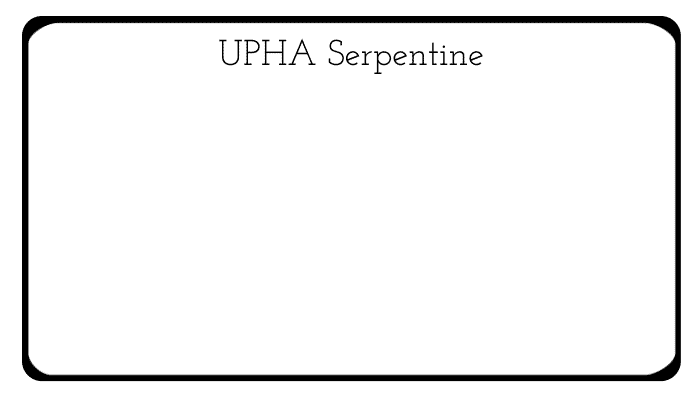
Get your horse focused
After standing in the lineup for a few minutes, it’s easy for your horse to get distracted or think they’re done for the day. Take some time before your number is called to bridle them up and get them focused again. Trot in small circles while you’re on deck to soften up your horses mouth, get them bending and reengaged with you.
Calm down
This is important for both rider and horse. If you have a greener horse, talk to them and pet them before leaving the lineup. Some younger horses get nervous when they have to leave behind their friends in the lineup, so make sure to comfort them through the process.
Remember to relax and take deep breaths. And trust that you can do it!
Take your time
Many nervous or novice riders tend to rush through patterns, but the key to a successful pattern is patience. Before moving on to the next element of your pattern, pause and wait for all four hooves to be on the ground. This shows the judges that you completed one element and are moving onto the next. It also gives you and your horse time to prepare for the next section of the pattern.
Miss a lead of diagonal? No big deal!
Even the best equitation riders will screw up sometimes, but it’s how you recover that matters. Calmly correct yourself as soon as you realize you messed up. Most judges will give you credit for recognizing a mistake and fixing it. No matter what happens though, end your pattern with a smile to show good sportsmanship.
Finishing touches.
After nailing your pattern, halt after completing it (unless told other wise) and subtly look at the judges to let them know that you’re done. This finishing touch shows that you know exactly what you’re doing and have thought through your pattern from beginning to end. And don’t forget to smile, because this is all about having fun!
Keep these tips in mind and you’ll be a pattern pro in no time!
About the Author: Anne Thurber is founder of saddleupconsultants.com and People's Choice Morgan Reserve equitation ride of the decade, 2001-2011.
A Beginner's Guide to a Saddlebred Horse Show May 19 2015 9 Comments
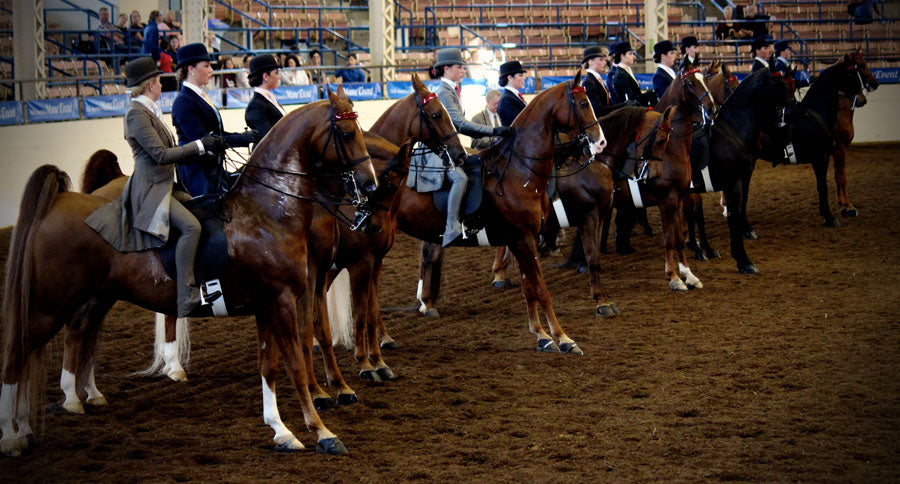
Being in the Saddle Seat industry, it can be really hard to explain why we love our sport so much. But the struggle is even more real for horse show newbies. For them, it can be borderline impossible to actually turn up to a horse show and figure out what’s going on.
How did they decide who won that class? Why are people yelling? And what’s with the organ music?
Riding disciplines like racing and jumping can be fairly easy to understand from a spectator’s point of view; cross the finish line first, or go over all the jumps fastest, and you win the ribbon. Saddle Seat, however, is a different beast entirely! There are so many different divisions to figure out. You don’t win if you are the fastest, you don’t win if you jump the highest, and even if there is a pattern to do, there’s also a rail work portion to figure out.
So, with all that said, here is quick beginner's guide to Saddle Seat horse shows, with questions provided by Tom the horse-show-neophyte.
When I watch a class, what should I be looking out for? What’s good horse form look like? And what does bad horse form look like?
Generally speaking, at a saddle seat show, you want to see a look of ease. Each division asks for different specifics - things like five gaits instead of three, a pattern, or showing at the flat walk or halt.
However, generally speaking, the most attractive horse with the most clear look of ease in the horse AND rider is the one that’s going to take the cake. These horses love their jobs and even if their riders are working really hard to keep their horse contained when it wants to leap for joy, the idea is that the rider also looks like they love their job! Equestrians everywhere have heard it before: “riding isn’t even hard, you just sit there” well in saddle seat (a sport in which that is not even REMOTELY true), that can be taken as very high praise!
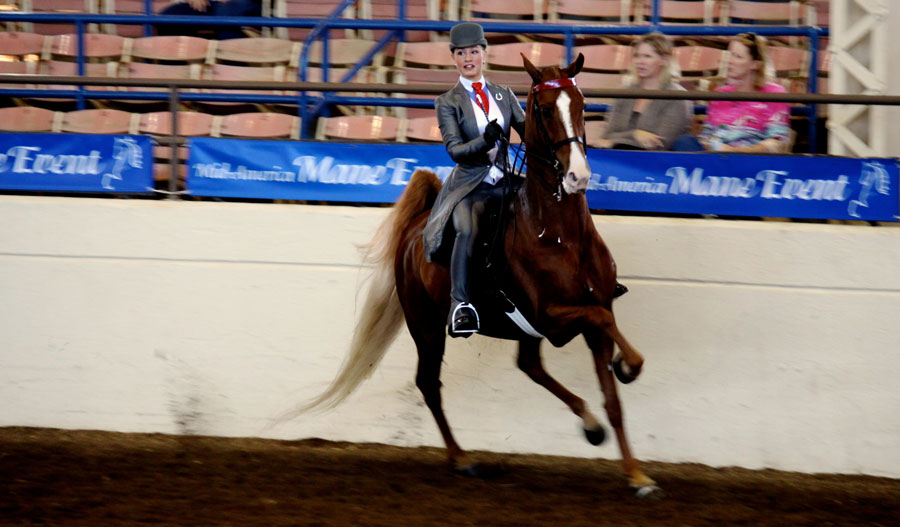
What kinds of classes are more about the rider than the horse? What should I be looking for in those classes? What’s good riding form look like? What does bad riding form look like?
Equitation classes are more about the rider than the horse. Equitation also has a variety of sub classes - i.e. pleasure equitation, saddle seat equitation, adult equitation, etc. In a class like this, you want to see great posture! Nothing absurd or crazy, but great posture just like you’d observe in someone walking around the city, upward gaze, shoulders down and back with clean confidence in their movement. This of course does not mean stiffness. Just like with good posture in life, stiffness is not only uncomfortable, but it is also uncomfortable to look at. The only thing that’s really different in saddle seat is the leg position. An easy thing to remember for new spectators is that there should be a straight line from the competitors shoulders, down to their hips, down to the back of their heels.
In classes where it’s all about the horse, won’t the most expensive horses just end up winning?
While financial investment plays a role in all equestrian sports, as well as all sports that rely heavily on “equipment” (in this case a beloved equine partner), behavior and riding ability has a huge effect on whether or not a horse can perform at its best. Depending on the division, a horse that costs well into the six figures may not be able to win a single ribbon simply because that horse does not like to flat walk or halt. If classes are large and there are a number of quality exhibitors that have great rides, if the most expensive horse in the class ends up buried by its competitors, it could easily be overlooked by the judges for a far less expensive horse that has a rider with ring sense/more showmanship. There are a number of factors that play into how well a horse does in any given day, but having the most expensive horse does not buy you a ribbons!
How about the classes in buggies? How are they judged?
Classes with jog carts or fine harness carts are typically pleasure and are judged by the same standards as other performance divisions. The horse that looks the happiest, that performs their required gates, and is seen by the judges will be the winner!
What are all those people in the stands yelling about?
As my Aunt Phoebe said at her first experience of a saddle seat show, “What is this? A tourettes convention?” The intermittent yelling and screaming of phrases like “YA BOY” and “YEEEEW” are just examples of some of the things you might be startled by at a saddle seat show. The reasoning behind this behavior is really quite simple: the horses they are yelling for are show horses and they LOVE to feel the crowd appreciating them. There’s nothing like crowd support to make a horse get bigger in mind and body than you’ve ever felt before! They love attention, they love to be admired, and cheering is the easiest way for them to understand you, as the audience, are appreciating their beauty! So be sure to pick a favorite and let a “ya boyyyyy!” out when you get to your first saddle seat show.
Have any questions about what’s going on at a saddle seat show that we missed? Or can you add anything to the answers we provided? Comment down below!
Breaking Down The Good Hands Figure-Eight May 05 2015 1 Comment
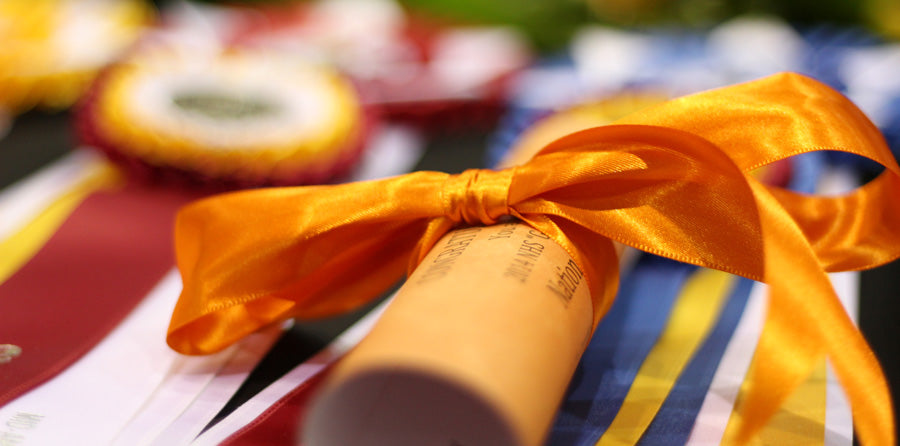
Last week, we took an in-depth look at one of the Saddle Seat Equitation Triple Crown Finals’ qualifying class patterns. This week we’d like to highlight the qualifying class and Phase I pattern for the first jewel of the Triple Crown, The Good Hands Final. The thing that’s so wonderful about The Good Hands Final is that the qualifying class pattern (which is also the pattern for the first Phase of the finals) is surprisingly (and enjoyably) ambiguous.
There are specific instructions: Trot from the line-up (or into the ring, if it is during the finals themselves) on the correct diagonal to the center of a figure-eight. Canter a figure-eight. Trot to the judges stand, stop, and back three steps. Continue trotting to the line-up (or out of the ring).
What they don’t tell you is exactly HOW you have to accomplish those parts. It allows not only for the typical show of skill and athleticism, but also for some individuality! While this pattern is a less stringent one than you would expect from the average equitation class or finals, there are still only two options for how to complete the pattern.
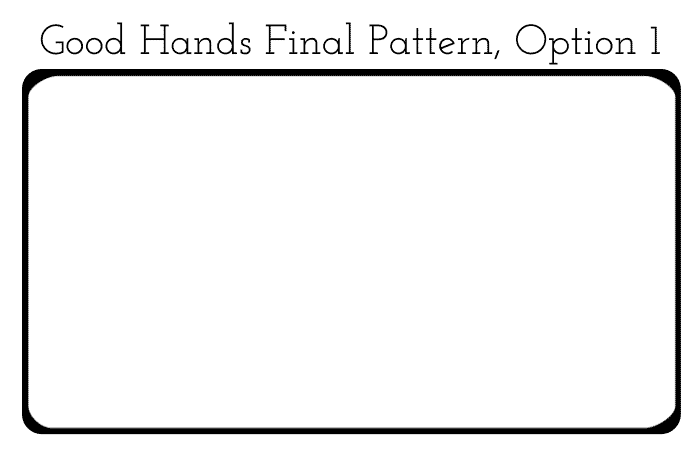
This is the more fluid of the two options. There is less stopping, pivoting and “slow-moving parts” so if you have an equitation horse that is less finished or perhaps more on the game side, this is the best option for you! In looking at the graphic, you can see that the only stopping is when you pivot onto the center of your figure-eight and when you stop to back your horse at the judges stand. SO!
- Step 1: Trot down the rail on the correct diagonal marching the entire way through. We can’t stress enough how important it is to push your horse up to the bridle at all times! It is essential to maintain good carriage and a light feel in your hands.
- Step 2: At the halfway point of the rail, angle into the center of a figure-eight and continue to press your horse forward into your bridle all the way until you reach that point. Nothing like a slow meander up to your center to really make your pattern appear weak and sheepish.
- Step 3: Pivot onto the center of your figure-eight and begin by cantering a circle to the left. Fun fact - any figure-eight, whether it is trotting or cantering, will always start to the left unless specified otherwise! Turn your eyes and head toward your figure-eight center and allow your hips to direct your horse around the lovely, round, circle that you are no doubt creating.
- Step 4: Canter your circle to the right and be SURE to keep it even. If your circle to the left was larger than expected, your circle to the right must be equally as large, and (if you’re asking us) we choose to err on the side of a larger circle, as making a circle equally as SMALL can be not only physically uncomfortable for you and your horse, but also visibly uncomfortable for the judges AND the audience.
- Step 5: Trot, on the correct diagonal out to the rail and around the turn to the left till you are at about the halfway point (or near to the judges stand where-ever that is geographically located in the arena, usually about halfway) and stop. Here is where you back three steps, a pattern request we have yet to discuss. Often made mistakes: too much curb, dropping your hands, yanking too hard and too suddenly on your horse’s mouth. When you ask your horse to back don’t change your body position or suddenly decide that your horse is 10X stronger in the bridle than they’ve ever been before. In fact, just don’t over think it. Ask your horse to back as gently as you would in the line-up of a pleasure class.
- Step 6: Finish strong and return to the line-up/exit the ring, once again, on the correct diagonal!
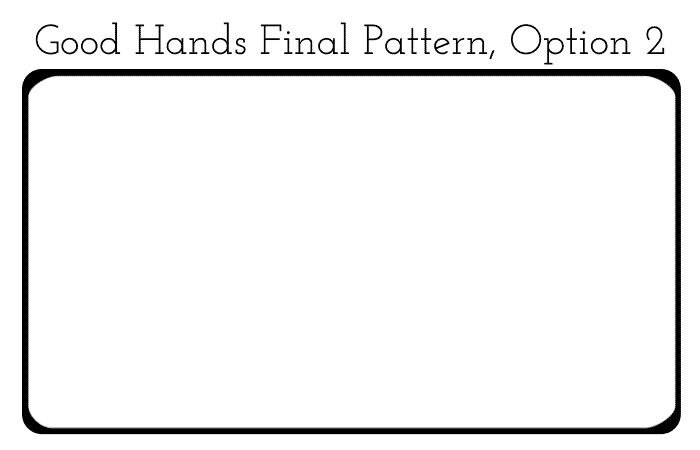
This option is for the rider that prefers a “cleaner” appearance to their pattern, has a more finished eq horse, or just really likes to pivot. This also means that you have to have the accuracy of hawk diving for its dinner because if any of your stops/points are off, you will skew your entire pattern. SO!
- Step 1: This is the same as Option 1
- Step 2: Instead of angling into the center of a figure-eight here, continue into the center of the turn where you will stop, pivot 90 degrees to the left (toward the center of the arena) and begin walking into the center of your figure-eight and stop.
- Step 3: Just like the Option 1, begin by cantering a circle to the left, only this time, your figure-eight is facing into the arena instead of facing out toward the stands. The equal circle tips still apply!
- Step 4: This is the same as Option 1 - especially that whole VISUALLY painful thing if your circles are TOO small!
- Step 5: Your exit/finish here is a little more direct than in Option 1. Pivot onto a diagonal line toward about the halfway point of the rail and pick up your trot on the correct diagonal. You can either stop AT the halfway point for your back or literally at the judges stand. There is some debate about this that is mainly solved by where the judges themselves decide to stand. Either way, keep a clean transition by maintaining your horse’s carriage and keeping your weight low because you’re about to do that transition about 10X closer to the judges than usual. Back your three steps utilizing the tips previously mentioned!
- Step 6: This is the same in EVERY pattern, finish strong and trot on the correct diagonal back to the line-up/out of the ring.
So while this pattern has more options, it requires all the tips previously discussed to keep from making simple mistakes during the pattern. Now head out there and get yourself qualified for this year’s Good Hands Finals!
Which option do you prefer? Tell us in the comments down below!
Five Steps to Perfect the Serpentine April 28 2015 1 Comment
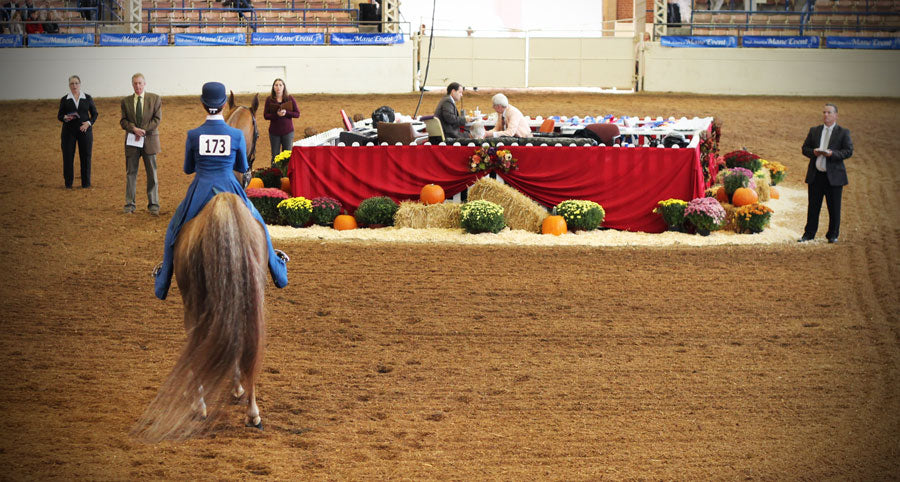
With show season getting into full swing, there are qualifying classes at every show until finals time. This means you had better get your stock patterns up to par if you want to secure a qualifying First or Second place…
..and then you can deal with the stress, the joy, the early mornings and long days, and demanding levels of athleticism that come along long day, and incredible level of athleticism that come along with equitation finals.
Let’s start with a classic, learned early in a rider’s training - the rinse repeat style pattern that is the UPHA Serpentine - better known as the workout at the end of a UPHA Challenge Cup class!
Step 1: Find Your Points
Nothing is worse than having bad geometry when performing a serpentine. It literally ruins the WHOLE THING and will make it crazy challenging (harharhar) to get your serpentine back on track, if it’s possible at all.
SO, whether you are a veteran or a first timer, FIND. YOUR. POINTS.
This includes your serpentine edges and your diagonal change points. If you are a froshie/maiden/newbie/n00b/whatever….someone that hasn’t done this before or often, your trainer will likely walk the pattern in the arena with you, point out good spots to use and help you identify little triggers to give you the best chance at success.
However, if you are a vet/a been there done that/an experienced equitation star, your trainer may no longer walk this pattern with you (unlikely, but possible). If that’s the case, you have GOT to take the time to walk around the arena (if it is open before or after the show) or around the stands to identify those points. Every arena is different and some arenas have confusing, trick center points (we all know that the outgate in the arena at Midwest Charity is not the center of the turn…. ruuuuude). Don’t let false centerlines throw your pattern off!

Step 2: Two-Step Your Way to a Beautiful Shape
After each loop and diagonal change, take two steps straight before you allow your horse to curve into the next serpentine loop. Nothing is more awkward than a serpentine that is not deep enough…it looks more like a sad little ripple in a pond than it does a serpentine, yuck. Taking two steps straight after your change will allow for more definition in your loops and keep your serpentine from looking like a yuck little ripple.
Step 3: Don’t Tuck Your Tail
We have talked about this issue before and it is a SERIOUS mistake for this pattern. With a total of three diagonal changes in quick succession, not only will all of your changes look awful and be super obvious, but you will probably actually throw yourself out of your horse's rhythm and slow your horse down too! Which brings us do our next point...
Step 4: March, March, March!
For the love of all that is holy PLEASE push your horse forward through this pattern! That does not mean run your horse off their feet. It means ride their back legs by clucking them up to the bridle and keeping them from losing momentum. There’s nothing worse than hearing the audience cluck FOR you because your horse has slowed so much that, by the last loop of your serpentine, it looks like you’re both wading through a swamp together.
Step 5: Finish Strong
By now you’ve made it past the serpentine loops and the diagonal changes so all you have to do is LEAVE! Well, that’s not as easy as it sounds. Just like in your serpentine, you have to push your horse forward. Plodding through your final trot down the straightaway is a surefire way to bore the crap out of the judge, and probably yourself a little bit. However, this is the perfect opportunity for the judge to scrutinize what is fundamentally a brief “solo” rail work so don’t stiffen up, repeat step four in your head, maintain the luxuriously beautiful and meticulously practiced leg position that we are certain you have had the whole time, and ooze with confidence! The pattern isn’t over until it’s over!
So get out there and compete in a UPHA Challenge Cup Class and get qualified for a final! You’ll find that with practice, you will be up to the challenge.
Three Signs That Equitation may NOT be Right for You April 05 2015
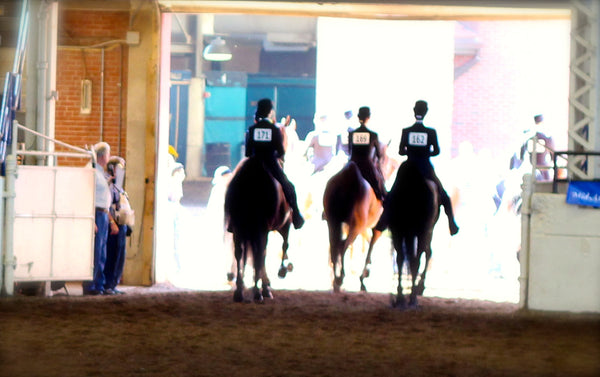
You may have seen last week’s article on the five most common equitation mistakes and thought to yourself, maybe I should try equitation? Well I agree, you SHOULD try equitation. It’s a great discipline that can improve a number of aspects of your riding ability overall.
BUT equitation is ultimately not for everyone.
In fact, I started my own “career” in the division of Pleasure Equitation and after feeling as though I was reaching a bit of a plateau, decided to take what I had learned and move into a performance division. So, how do you know if equitation isn't the best long-term fit for you? Here are three signs that may mean equitation is not the discipline for you.
1. You like to go FAST
While equitation can absolutely be the thrill of a lifetime, if you don’t find patterns to get your blood pumping, you may be most excited by being in a performance class. There is nothing like the power of a speedy and true rack or the metronome style trot of some of the greatest three gaited horses. Equitation is precise, elegant, and controlled discipline and if you have to make an either/or choice (we can’t all do both), and you have a need for speed, you should definitely turn your eye toward a performance division.
2. You don't sweat the small stuff
If you find yourself saying “yea, yea, yea” in your head when you walk a pattern with your trainer, first of all, check your attitude at the door.
Secondly, you may not care too much about the little things.
The precision of equitation is founded on the little details; hitting your center points, leg and hand position, all the way down to the rules about attire. If you just want to hop on and ride without spending too much time prepping on the ground, equitation will absolutely bore you to TEARS. Try a classic performance division like Show or Country Pleasure where your job is to ride well and be happy about it!
3. Riding more of a hobby than a sport to you
While I have a hard time relating to this mind set (as I spend six days a week with horses), some people just find the occasional weekend at the barn to be enough, or a good enough stress reliever. I say, anytime spent with horses is time well spent, but only being willing or able to commit a day every week or so to practicing may make it more challenging to follow the disciplined regime necessary to reach higher level equitation performance. It could also make it difficult to ride more exciting (and challenging) horses. Three and five gaited horses as well as park horses tend to be more of a challenge. Their intensity is what makes them suitable to those divisions.
If you seem to fit in this category, consider a driving division. Equally as prestigious, Fine Harness is a division that has seen some of the most renowned saddlebreds this industry has had the privilege to behold. You can also wear a really cool hat!
So while Equitation may seem at times like the be all and end all, you may find that another division may be a better fit. While my time in equitation was invaluable and pivotal to my learning as an equestrian, I was undeniably happy when I made the switch to a performance division. The important thing is that you feel like you're always being challenged, but also that you're continuing to grow as a rider.
Have any stories of your own on the switch to or from Equitation? Tell us how it went in the comments down below!
From Academy to A Circuit: What Changes? January 26 2015 1 Comment
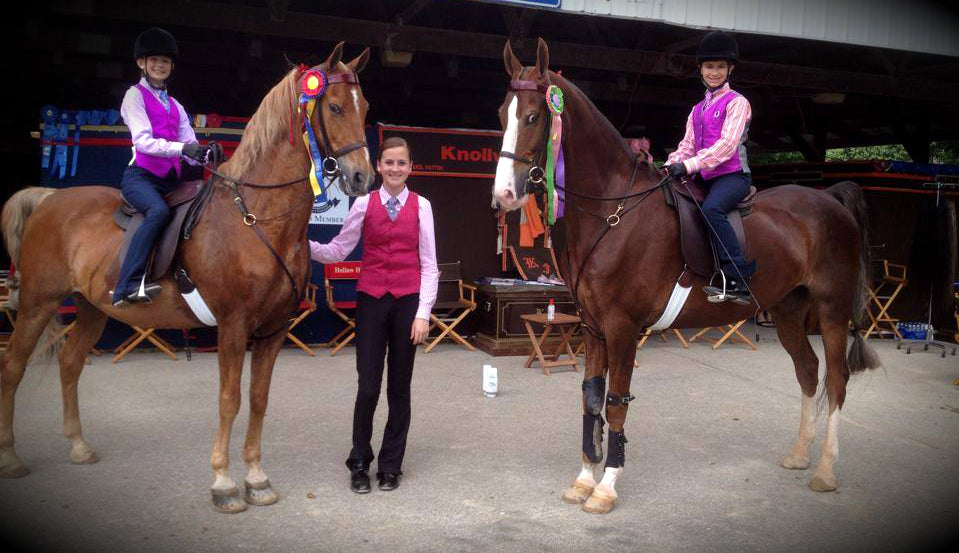
While many in the Saddlebred industry started their show career at Midwest in a Walk and Trot or Walk only leadline class, many more of us started our Saddlebred career with academy showing and worked our way up to A Circuit showing. But before getting into the biggest differences between academy and A Circuit, it’s important to acknowledge that both are incredibly important to our industry and our learning, and that both should be equally regarded as funnels for building and growing the Saddlebred and industry. Showing in the A Circuit does not mean that the riders are better, just like showing in Academy doesn’t mean you aren’t capable of showing A Circuit.
However, there’s often a hullabaloo associated with making a transition from academy to A Circuit, and here are the three things that we found to be notably different when we decided to go from academy to A Circuit.
The Horse
We all love our school horses, but compared to an A Circuit show horse, academy horses are a totally different animal (pun fully intended). Academy horses go forever, show in a ton of different classes at any given show and are often bomb proof, giving any rider a safe and fun learning experience. A Circuit show horses are powerful, have tons of motion, and are usually only shown in one division (meaning you get a qualifier and a championship and that’s it). These animals have motors on them and live to be in the show ring, in front of people, hearing the cheer of the crowd and gelling with their rider, becoming a fluid and unstoppable team. On the other hand, academy horses live to be loved, to teach their riders, and to challenge them in silly ways (like pulling them out of the turns or having a bit - or a lot - more “go forward” than they do at home).
The Outfit
Academy regulations are different by region, but in the midwest, jods, a button down shirt, vest, tie, hair in a bun, nice clean boots and gloves comprise the academy show outfit (with appropriate accessories of course). A Circuit outfits require a whole lot more, and vary depending on what division you and your horse plan to be showing in.
Equitation
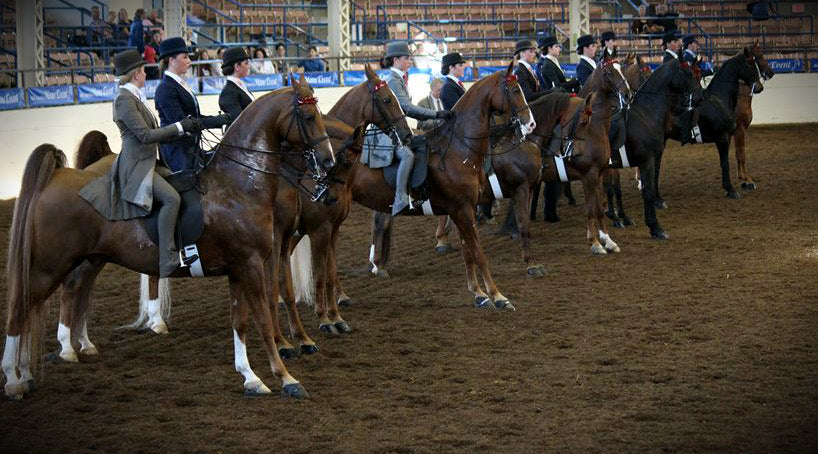
If you are in equitation you will want a solid colored suit (meaning jacket and jodhpurs are the same color and pattern - no day coat), button down shirt, vest, tie, gloves, hair in a bun, matching derby, and matching boots. You will also need a formal or “tux” for evening classes, black or navy tux with the proper tux shirt and vest, studs for the buttons, bowtie, top hat, white or black gloves, matching boots and appropriately accompanied accessories for both day and night classes.
Performance
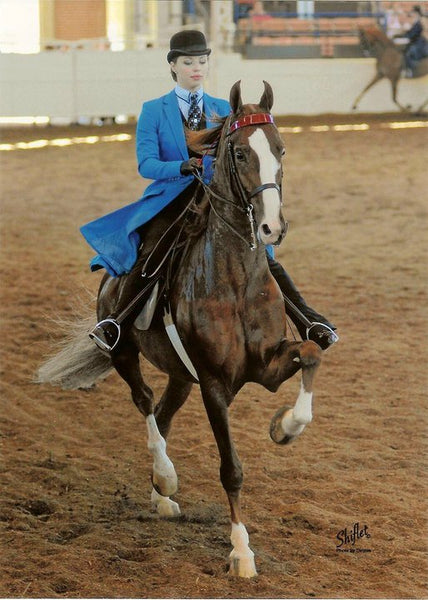
If you are in a performance division you can wear the same, solid colored suit ensemble, or you can get more creative with a day coat and suiting ensemble. This usually comes in the format of a solid pair of jods with a patterned coat in the same color family (plaid or some other variety of textured fabric).
Three-Gaited or Park
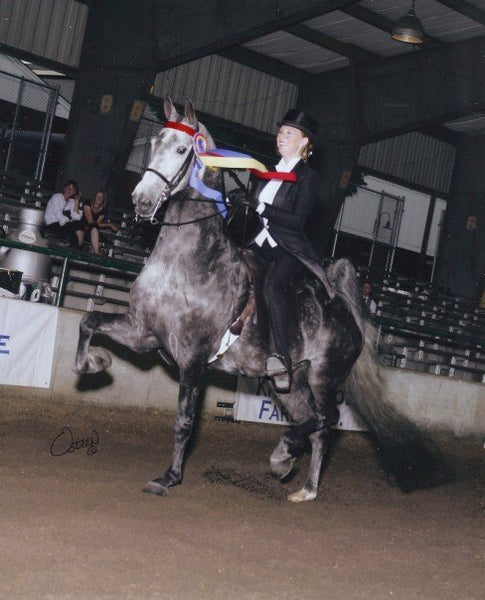
If you are showing in the three-gaited or park subdivisions of Performance you will also need a tux of the same variety, however, you can also go for a “day coat” style of tux, where the coat, just like the day coat for a regular suit, does not match the jods. We could go on and on about the little bits and pieces of show suiting, but the fundamentals are this: academy - one outfit, A Circuit - many outfits with many pieces.
The Bridle
Once again regulations on this topic are regionally different and also in the midst of being changed by certain governing bodies, but typically speaking, you don’t see an academy horse showing in a double bridle, whereas you only see A Circuit horses in a double bridle. Many academy horses are seen in the show ring in their at-home bridles (clean and dressed up with ribbons of course), but it’s usually a snaffle bridle, perhaps with a german martingale or some variety thereof. The A Circuit horses are in double bridles with two bits in their mouth with ENDLESS varieties on those bits, but often, one is a smooth or twisted snaffle and one is a curb with long shanks to which the curb rein is connected at the bottom. This gives the rider far more leverage than a typical snaffle bridle with two reins and also requires a much more subtle hand. We all know Saddlebreds are a breed that are typically naturally light in the bridle and require little corrections here and there. With such a powerful bridle as part of the showing requirement, to ride A Circuit, you must be able to ride with a light hand, make the necessary and proper adjustments, and keep your hands independent from your body movements (aka no posting from the bridle - NO horse will thank you for that kind of behavior). While these are all goals in academy, it’s far more challenging to find the forgiving nature we so often see in school horses packaged in the exciting mentality of a show horse competing on the A Circuit level, and the bridles the school horses wear allow for that type of learning in the show ring.
Wrapping Up
There are SO SO many more differences between academy and A Circuit that we could go into, and these are just a start. Do you dave any differences you noticed when making the switch from one showing experience to the other? Let us know in the comments below!
I Didn't Care for Equitation. Now I Do. Here's What Changed. November 14 2014
My wife, Lindsay, has been riding since she was nine. I've always made an effort to be involved, and to take an interest in all things equestrian, but I really didn't get it. What were the judges actually looking at? How can they tell who's doing well and who's doing poorly? And what's with the dinky organ music?
Well, this year I had a pretty unique opportunity, in helping Lindsay organize the NHS "Good Hands" Finals at the Mid-America Mane Event horse show. And now I think I'm starting to get it. This time, here's what I saw:
Spending a few days filming this event, and then spending a few more watching the footage as I edited it, I was really struck by three things I'd never noticed before.
1. The Precision of Equitation
Watching the eventual champion, Aleia, walk her pattern with Erin before anyone had entered the arena, I was surprised to see how much attention they paid to every detail. Every turn was thoroughly thought through, and every pause was careful and deliberate. Seeing the competitors perform their patterns, I couldn't help but appreciate how precise that attention to detail made every movement, for both horse and rider.
2. The Intensity of the Competition
As Allison Lambert says in the video, "the girls work so hard." What's more, they care so much about how they do. Walking individual patterns in front of a panel of judges and a crowd of onlookers takes incredible competitive spirit. One interesting thing that Jessie Wuesthoffen said, which we couldn't quite fit into the video, was that she found herself naturally distancing herself from the other riders last year, even though they were (and are) her friends. But this complicated intensity has an equally empathetic upside (that hug!) and feeling of mutual respect.
3. The Horsies
Horses are cool. Everyone gets that. But this was an absolutely amazing group of horses. I mean that first shot - look at that face! But it's also amazing when you begin to see how attuned they are to the feelings of their riders. They get just as nervous, and just as excited. And they show it, especially when compared to the restraint of an equitation rider.
So I think it's fair to say that I'm starting to get it. Except, maybe, the organ music.
